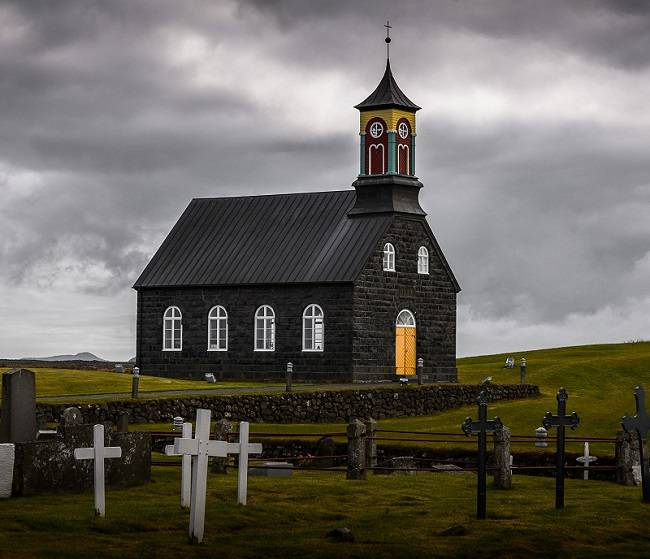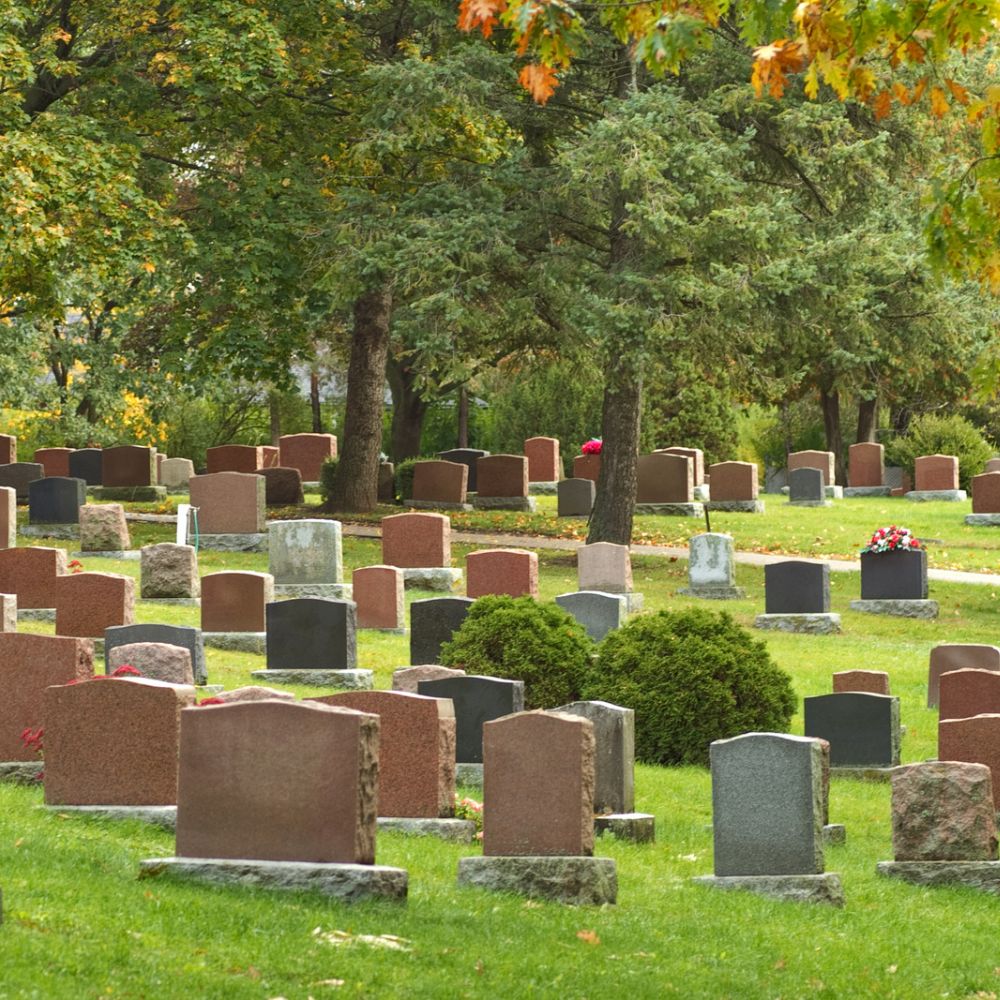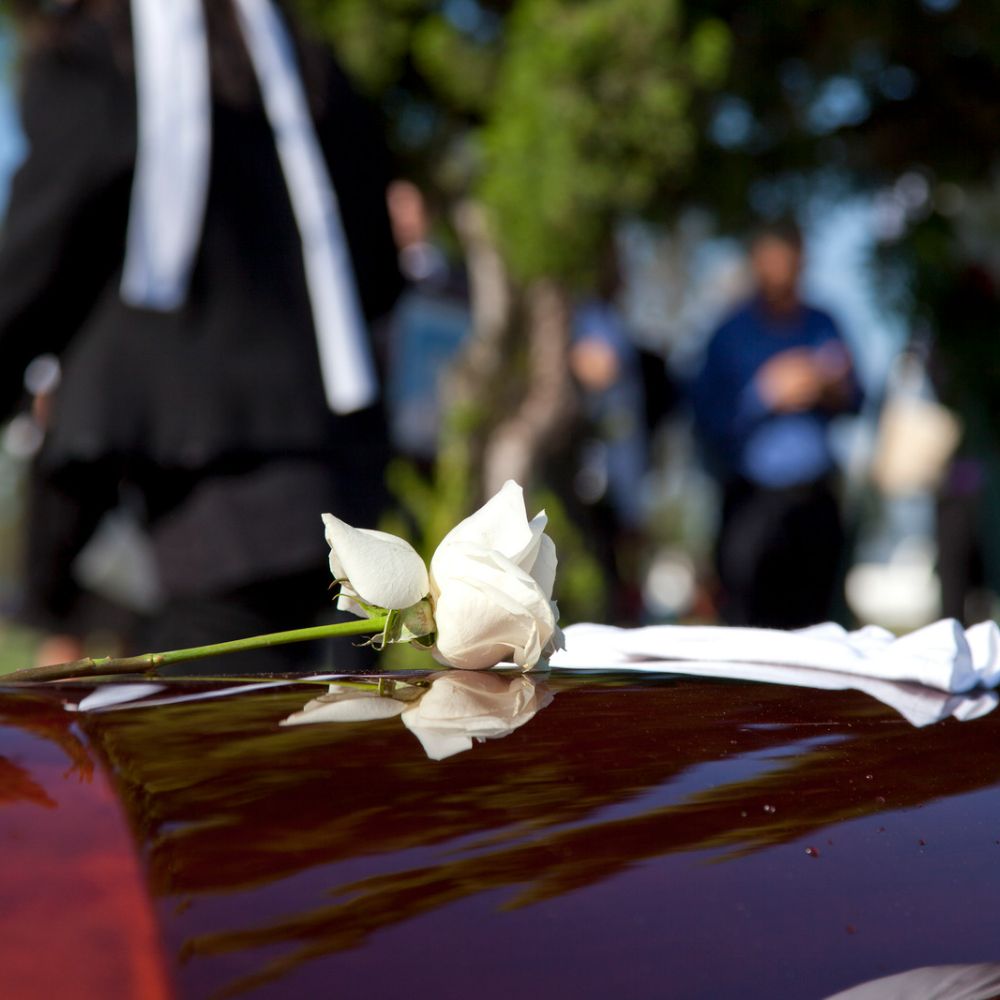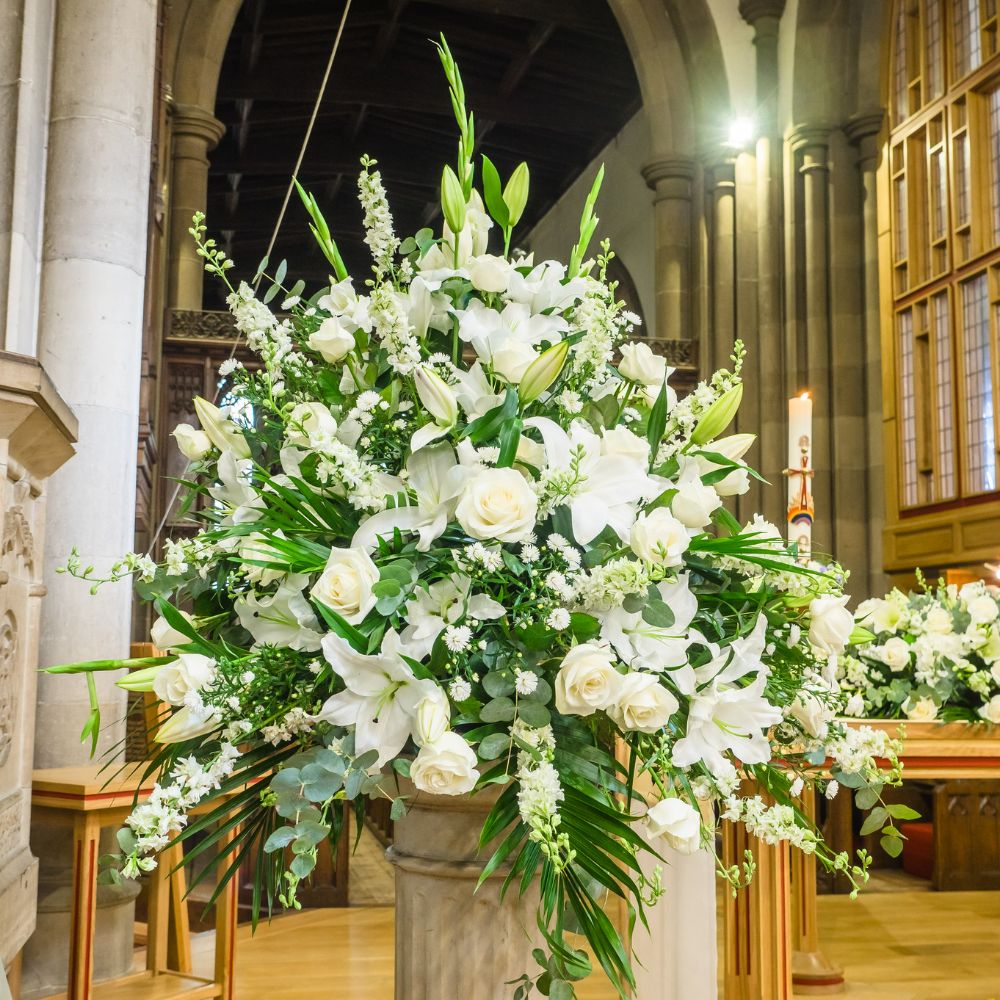All Articles & Guides / Funerals & Celebration of Life / Funeral Planning Guide
Funeral Planning Guide
No matter the circumstances surrounding the death of a loved one, planning a funeral is always difficult, regardless of whether you were prepared and able to plan ahead. Having to make decisions during a time of grief can be overwhelming, and it’s important to know your rights so that you can plan the proper send-off your loved one desired. Read through our funeral preparation checklist to organize responsibilities and make the process of planning a funeral a little less difficult.
Funeral Preparation – Initial Steps
- Decide who is responsible
- Be familiar with your rights
- Determine the budget and funds for a method of disposition, funeral service, and burial costs
- Gather important documents in one safe location
- If possible, talk to your loved ones about their final wishes and keep a record of their preferences and any important information.
Who is Responsible for Planning a Funeral?
Either before or after your loved one’s passing, it’s helpful to choose one individual who is the designated contact for the funeral home (if you use one) and any other officials, chaplains, or vendors that you may be working with. This will help avoid spreading conflicting information or decisions being made that have not been agreed upon by the family.
If your loved one knows who they would like to designate to make decisions about the funeral, this information can be included in their will or another notarized legal document. This designation is typically legally binding and must be honored. The exact guidelines may vary by state, however, so you may want to check with an estate planning lawyer to make sure that you are following the law.
In cases where no instructions have been left, the final decision is typically up to the next of kin, with the following hierarchy: spouse, adult children (with majority agreement required), surviving parents (must agree), siblings (again, the majority must agree on decisions), a court-appointed guardian, and finally a person who is considered to be the most responsible party. There may be some variation by state, and each state has its own laws about who makes the final decision in cases where the legally responsible parties cannot come to an agreement.
In addition, in a number of states it is possible to designate a funeral agent. This individual has the authority to decide the disposition of the body, what type of funeral or memorial service will be held, and where (and if) the deceased should be buried. Depending on state laws, the individual designating the funeral agent may need to fill out an advance health care directive, health care power of attorney, or other document. You should speak to a lawyer in your state if you are interested in designating a funeral agent.
Laws Involved in Planning a Funeral
Laws about funerals and burials are different in each state. It’s smart to know which goods and services the law requires you to purchase and which are optional. Understanding your rights in advance of planning the funeral can help eliminate unexpected challenges and frustrating delays.
In many states, you are not required to hire a funeral director and can handle all arrangements and paperwork yourself. As of 2018, however, nine states do require the involvement of a funeral director for at least some tasks, such as filing the death certificate or arranging for the body to be transported. These states include Alabama, Connecticut, Illinois, Indiana, Louisiana, Michigan, Nebraska, New Jersey, and New York.
Embalming is almost never legally required, but this may depend on the specific circumstances. If the body will be transported out of state, some states legally require the body to be embalmed. It’s important to know if your loved one would prefer not to be embalmed so that the arrangements can be made quickly, if necessary.
No state requires that you use a casket for cremation. Federal law requires that you be allowed to choose an alternative container, such as one made of unfinished wood or cardboard, if you so choose.
If you are planning a home funeral, advance preparation is even more important. You’ll need to know your rights in your state and feel comfortable caring for your dead at home. Home funerals have grown in popularity in recent years after becoming less common during the 20th century. As a result, you may feel pressure from people who don’t understand why you would choose this method of honoring the deceased. Learning all that you can in advance can help eliminate any of your own confusion and may make you feel more confident in your choice.
Who Pays for a Funeral?
Funerals can be very expensive, and many people end up spending around $10,000 including the service, casket, and burial. The person responsible for paying for the funeral will be the main contact who organizes the funeral with a director or funeral home. There are also many options when a family can’t afford to pay for a funeral. While pre-paying for funeral arrangements is not recommended by most professionals, you can also set money aside in a special trust or savings account specifically to pay funeral costs.
Each state has its own rules about these accounts, which may be called Payable on Death (POD) accounts, Informal Trusts, or Totten Trusts. The basic idea, however, is that the account allows you to set aside a relatively limited amount of money that is specifically designated to pay for your funeral. While you are alive, you have complete access to the account and can add money or take it out as needed. When you pass away, the money in the account is given to your designated beneficiary without going through probate.
The Funeral Rule federal law requires that funeral directors provide you with pricing information on their services, as well as that you be allowed to buy only those arrangements that you want. You must be allowed to purchase goods (caskets, cremation urns) and services (a memorial service) separately, and to buy caskets or urns elsewhere. The law also requires that you be given a written statement of what you are buying and the cost of each item before you pay.
While these requirements are often more important after your loved one has passed away, it can be helpful to begin talking to funeral directors well in advance of planning a funeral. Find someone who you are comfortable working with and who is open and honest about their services and their prices. Most funeral directors want to help you through your time of grief and assist with the difficult decisions that need to be made.
How Long Does it Take to Plan for a Funeral?
How long it takes to plan a funeral depends on what kind of send-off you are planning for your loved one, as well as if any pre-planning occurred. In general, a funeral can take between a couple days to two weeks to plan. Once a doctor officially signs a death certificate, cremation can occur relatively quickly, typically in between 12 and 48 hours. Planning a funeral service can take longer, especially with loved ones traveling from afar and having to organize different vendors for floral arrangements and catering.
To help smooth the process, consider splitting responsibilities between family or friends. If you were able to discuss end of life planning with your loved one, use their final wishes as a guide. Ultimately, having this information on hand will make filling out any paperwork after their passing much easier.
Funeral Planning Guide
Whether a death was sudden and unexpected, or the result of a long illness, planning a funeral is often a sorrowful and stressful time. It can be a challenge to make decisions as quickly as required while struggling with grief, and many people feel overwhelmed by the whole process. There are a number of steps that need to be completed before planning the actual funeral and a funeral preparation checklist will help you understand what decisions need to be made and what you can do to make funeral planning easier and less costly.

Funeral Preparation Checklist
Here is a list of the initial tasks that will require decision-making when planning a funeral:
- Determine who is the legal next of kin or who has the legal power to make decisions about the funeral and final disposition.
- Find out if any pre-planning was done and if arrangements have already been made with any funeral homes. If not, choose a funeral director to work with, if desired and if required by your state.
- Choose the method of disposition, if not preplanned, and determine how quickly the body needs to be moved or any other immediate preparation.
- Gather all personal information about the deceased, including important documents.
- File for the death certificate, disposition permit, and burial transit permit, if needed.
- Organize a service, if desired.
Planning a Funeral Service
- Select clothing and other items that you would like the deceased to be buried with, if needed.
- If the deceased will be buried, decide if you want an open or closed casket and whether you will hold a viewing so that others can pay their respects.
- Find a location, such as a chapel, in which to hold the service.
- Arrange transportation for the deceased and the family.
- Contact a funeral celebrant or member of the clergy to lead the service, if desired.
- Decide if the service will be open or private.
- Choose pallbearers, if needed.
- Arrange for any music that you want during the ceremony.
- Organize floral arrangements and any other décor or photos you’d like displayed.
- Determine who will speak during the funeral, and any special readings that will be included.
- Consider what additional items are needed, such as photos or videos, a microphone for those who speak, chairs (if not provided), etc.
- Plan the funeral reception if you want to have one.
- Publish the details about the service, if it will be open, and/or send out invitations to those you would like to attend.
The items in this checklist are listed consecutively, but sometimes they may occur all at once or in a different order, depending on your specific circumstances. Many of the details on this funeral preparation checklist can be handled by a funeral director, if you choose to work with one. Below are more details expanding on some of the initial decisions you’ll need to make when planning a funeral service.
Important Personal Information for Funeral Preparation
Here is a list of some of the necessary personal information you’ll need about the deceased when planning the funeral:
- Full legal name
- Date and time of death
- Contact information (name, address, phone number) for the certifying physician
- Date and place of birth
- Parents’ names, including mother’s maiden name
- Parents’ birth states and counties
- Social Security number
- Marital status and spouse’s name
- Occupation
- Education level
- Home address and how long they lived there
- Military service
- Disposition: preferred form, if known; place; and contact information for the person who has the right to control these decisions
In addition, you or the family of the deceased will need access to many important documents, including the will, estate planning documents, and any other written final wishes. Also, make sure you know where to find items such as birth certificates, marriage certificates, military service records and/or discharge papers, health and life insurance policies, and Social Security records. While you may only need some of this information as part of the funeral plan, it will likely be needed in the future as you settle the estate.
The Details of Planning a Funeral Service
Determining the Type of Disposition
If your loved one left a record of their final wishes for disposition, this should be followed as closely as possible. In some states, you are legally required to follow the instructions of the departed, unless there are reasonable reasons for not doing so. It would be reasonable not to spend an excessive amount of money on an extremely lavish funeral, for example, but not reasonable to decide on burial instead of cremation just because you prefer it. The most common options for disposition include burial (below or above ground), natural burial, cremation, burial or scattering at sea, and donation to science.
Choosing What Type of Ceremony to Hold
Decide if you wish to hold a traditional funeral with a graveside ceremony, a memorial service, a home funeral service, or another type of ceremony. Much of this decision may depend on whether the departed will be buried or cremated and what will be done with the remains. If the deceased has donated their body to science, for example, a graveside ceremony will not be possible.
The order of service for even a traditional funeral service may vary, depending on whether it involves a specific religious tradition, but often includes the following:
- Musical prelude as guests arrive
- Processional – entrance of the casket, celebrant, and family
- Introduction and welcome
- Music or hymns
- Prayers and/or readings
- Musical selections
- Eulogy and/or reading of the obituary
- Tributes to the deceased
- Giving thanks and acknowledgements
- Viewing of the deceased
- Final prayers and benediction
Choosing Between an Open or Closed Casket
In most cases, you will have the option of having an open casket during a viewing, visitation, and/or the funeral service. Many people believe that having an open casket gives the family and friends a sense of closure, and a final opportunity to say goodbye to a loved one who is at peace. Others feel uncomfortable with the practice, however, and there are some circumstances in which it is not possible.
If you feel that many mourners won’t be comfortable with an open casket at the funeral itself, consider holding a viewing before the funeral so those who want to can come pay their respects. The casket is typically open during a viewing, which can be held at the funeral parlor, a chapel, or in the home of a family member. Tips on funeral visitation and wake etiquette should help guide your planning.

Choosing Between an Open or Private Funeral Service
A private service limits attendance to only those who are invited, while an “open” service is open for anyone. There are a number of reasons why you might want to keep a funeral or memorial service private — since it allows you to limit who can be present, it can allow you to avoid uncomfortable family situations, honor certain religious customs, and may allow the family to spend less money on the service. It’s also possible that the departed specifically asked for the funeral to be private. If the deceased was well known, a public service might draw too much attention or prevent family and close friends from saying goodbye in a respectful way.
An open service, on the other hand, allows everyone who knew the deceased the opportunity to join in the mourning process. Private funerals can leave people feeling left out and could lead to hurt feelings. To avoid this, you may want to keep the funeral or interment private, then hold a later memorial service that is open.
If you do decide to have a private service, you’ll need to decide who to invite and prepare and send those invitations. Make sure to note in the obituary or notice that the service is private or is a “family funeral.” You might even postpone publishing the funeral announcement until after the service, noting when the funeral was held and inviting the public to any future memorial services.
Select Clothing and Other Personal Items
With any service that involves the body of the deceased being present — whether with an open casket or not — you will need to pick out clothing and any items that you’d like your departed loved one to be buried with. Many people choose a special outfit, such as a formal suit or nice dress; although, favorite clothing is a good option. You should also consider if there are any religious customs that need to be followed when dressing the deceased.
Most often, the deceased is prepared and dressed at the funeral home. If you’re planning the funeral yourself and choosing to care for the departed at home, you’ll need to understand the basic procedures for appropriate hygiene and preservation, as well as washing, dressing, and cooling the body. It’s a good idea to speak to a home funeral consultant about these issues.
While there are very few rules about what a person can be buried with, traditional cremation does have some restrictions. Families can usually dress the body as they would for a burial, but most personal items are removed from the casket and returned to the family before the cremation takes place for safety reasons. Any metal that remains after the cremation, such as from dental work or parts of the casket, will be separated from the cremains.
Determine a Location for the Funeral Service
It’s common to hold a traditional funeral in a place of worship or other facility provided by the funeral home. If the deceased was not religious or you simply prefer a less traditional location, you might consider a private event space or even an outdoor setting. You’ll need to be aware of the challenges of bringing the coffin in and out unless the deceased will not be present. Home funerals have also grown in popularity in recent years, and they can be a wonderful way to remember the departed in comfort and privacy.
Arrange Transportation for the Deceased and the Family
This entry in the funeral planning checklist is often handled by the funeral director. If you’re having a home funeral or doing all of the funeral planning on your own, you’ll likely hire a hearse or other appropriate car to transport the body where it needs to go — often to the funeral service, to the burial location, and/or to the crematory. State laws on transporting a body vary, so do your homework before coming up with a plan. Keep in mind that transporting a body across state lines can raise additional issues.
The immediate family and, often, close friends of the deceased will all need reliable transportation from the service to the cemetery. Often, a limousine or luxury sedan will be rented for this purpose. Since these vehicles are often only used for the journey to the cemetery, make sure that anyone who travels this way has transportation home or to the funeral reception.
Choose Pallbearers, If Needed
In a traditional funeral, the pallbearers carry or escort the casket into the venue at the beginning of the funeral and remove it at the completion of the ceremony. They may also carry the casket from the hearse to the gravesite.
Being a pallbearer is a great honor, but it can also be a very emotional task. Choose six to eight people — men or women — who are family or friends of the deceased and who feel able to handle the responsibilities. If there are individuals who you would like to honor with the role of pallbearer but who cannot serve due to physical disability or other concern, they can be made honorary pallbearers and asked to walk behind the casket.
Funeral Music
Most funerals and memorial services include music, and the choice of what to play is often influenced by the personality of the deceased and the location of the service. There may be restrictions on music for funerals held in a church or other place of worship, for example. Many families incorporate music that was meaningful to the deceased as well, particularly as part of the arrival or exit.
Determine if you want live music or recorded, and which songs will play when. You may want to have instrumental music play between speakers during the service and a couple special pieces for before and after. Live performances can be especially meaningful, particularly when they are given by friends or family.
Planning Funeral Eulogies and Speeches
The number of speakers or readers will vary depending on your funeral preparation checklist. Some funeral plans include multiple tributes from family members and friends, or even have a brief period during the service in which anyone can stand up and say a few words.
If you do plan to allow loved ones to choose their own readings or to give tributes, make sure that you set a few guidelines on topic choice. As a speaker, it’s best to prepare a eulogy, tribute, or any special talks in advance instead of coming up with words on the spot.
Many funerals include a guest book for attendees to leave a message of condolence. Include extra paper and pens, just in case. You might also want photos or a video of the deceased to display as a tribute.
The Post-Funeral Reception
While holding a reception after the funeral is not required, many people find it to be a good way to share memories and give each other support in a more casual environment. A reception can be held in a rented event space, in the homes of family members, in church halls, in local restaurants, or in the parlor of the funeral home.
Depending on the type of reception you’d like to have, you can ask family and friends to contribute food and drinks in potluck fashion or have the event catered.
Placing an Obituary and Funeral Details
While you will want to reach out to family and friends as soon as possible after your loved one passes away, placing an obituary allows you to spread the word more widely. This is an important part of planning a funeral because it typically provides information about the date and location of any funeral or memorial service. If you’re working with a funeral home, they will often coordinate sending out the obituary to local newspapers and online sources, and many can guide you if you’re not sure what to say.
Planning a funeral can take a lot of time, effort, and emotional resources. It’s best to work with someone, whether it be a funeral director, a funeral planner, or a friend or family member who can help carry some of the burden. Don’t be afraid to ask for help when planning a beautiful goodbye for your loved one, whether that be a virtual funeral or an in-person occasion.






